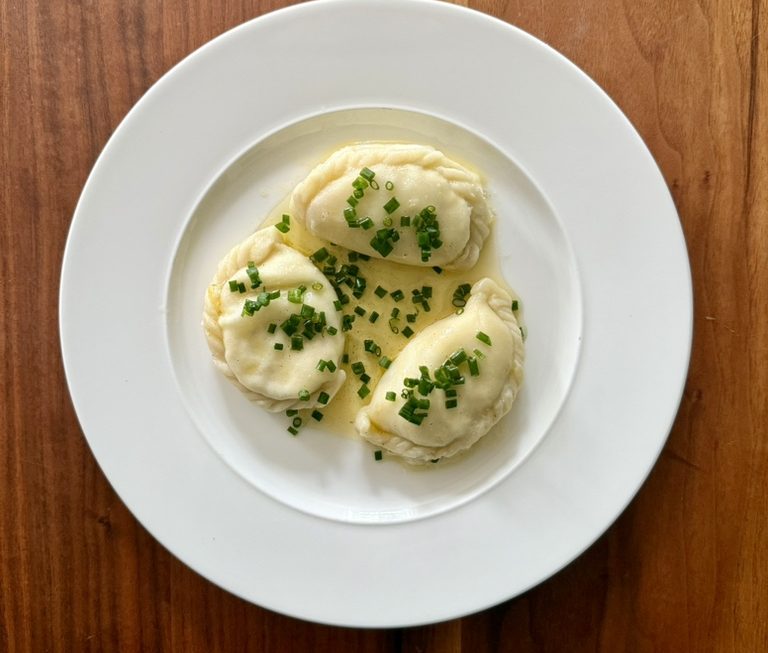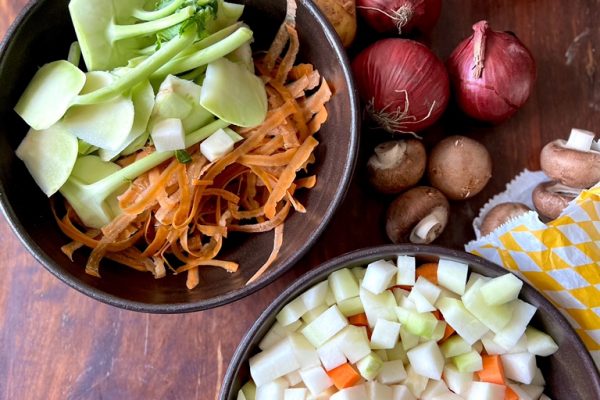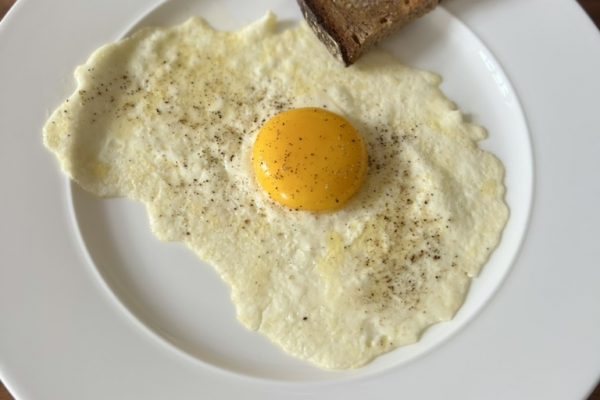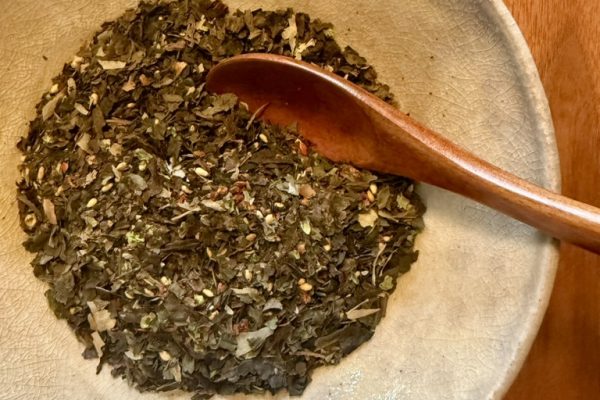We are visiting Carinthia, a particularly scenic province in southern Austria. Of course, this calls for the most famous Carinthian dish, “Kärntner Nudeln”, or more precisely, “Kasnudeln” (there are variations with other fillings, which we may describe another time). “Kas” does not stand for cheese, but for quark, which is otherwise known as “Topfen” in Austria.
The quark is also one of two difficulties when preparing this dish, as you need a fairly low-fat and, above all, dry quark. If it is too moist, the filling will not work.
The original recipe calls for “Bröseltopfen,” which is a crumbly quark with the liquid removed. Unfortunately, this is virtually impossible to find outside of Carinthia or Austria.
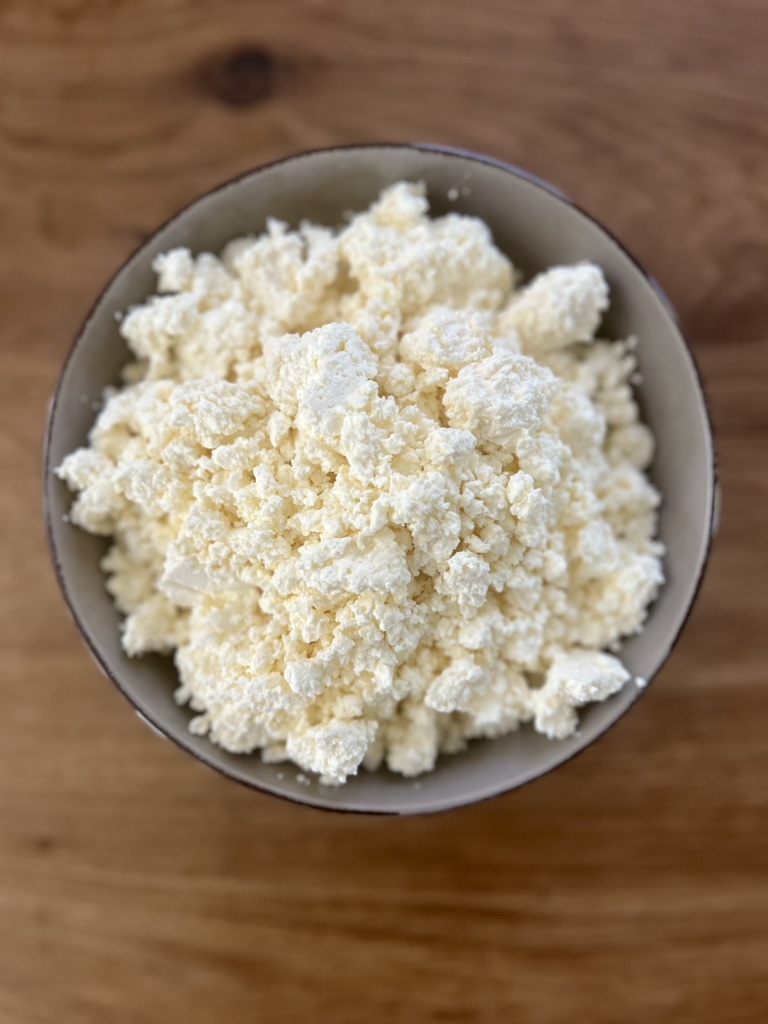
There are two solutions if you want to prepare the dish without this product:
You can wrap low-fat quark with a fat content of no more than 20% in a fine-mesh cloth and twist the ends so that the quark is wrung out. Then place it in the cloth in a sieve over a bowl in the refrigerator for several hours, or better still overnight, so that it loses more liquid.
As an alternative, you can use ricotta, which you drain for half an hour in a fine sieve lined with a cloth. The result is slightly different, of course, but equally delicious. And in Carinthia, every family makes their “Kasnudel” in their own personal way. The only important thing to remember is that if you drain quark yourself or use ricotta, you need to reduce the amount in relation to the potatoes in the filling, otherwise it will be too moist. If the finished filling is too moist, you can correct this by adding a little breadcrumbs.
The other difficulty is a type of mint that is native only to Carinthia and parts of Styria (Mentha austriaca), also known as noodle mint or brown mint. It has a distinctive citrus aroma that is quite different from other types of mint. If you want to use other mint, it is best to use dried Turkish/Oriental mint or a little fresh Moroccan mint. Under no circumstances should you use peppermint, as it is much too strong and unsuitable in terms of flavour.
However, you can also leave out the mint completely. They even do this in Carinthia. You can then use a little more chervil or add parsley.
The Dough:
We start with the dough, as it needs to rest before processing. A very fine (Austria: “glattes”) wheat flour is often used, as it absorbs liquid well.
However, there are also recipes that use coarser flour (“griffig”). Since flours are produced very differently around the world, it is best to choose the locally available flour that is best suited for pasta.
The dough is sometimes prepared with or without eggs. Without eggs, it becomes much firmer and therefore easier to work with. However, we prefer the version with eggs as it is smoother and a bit more elegant.
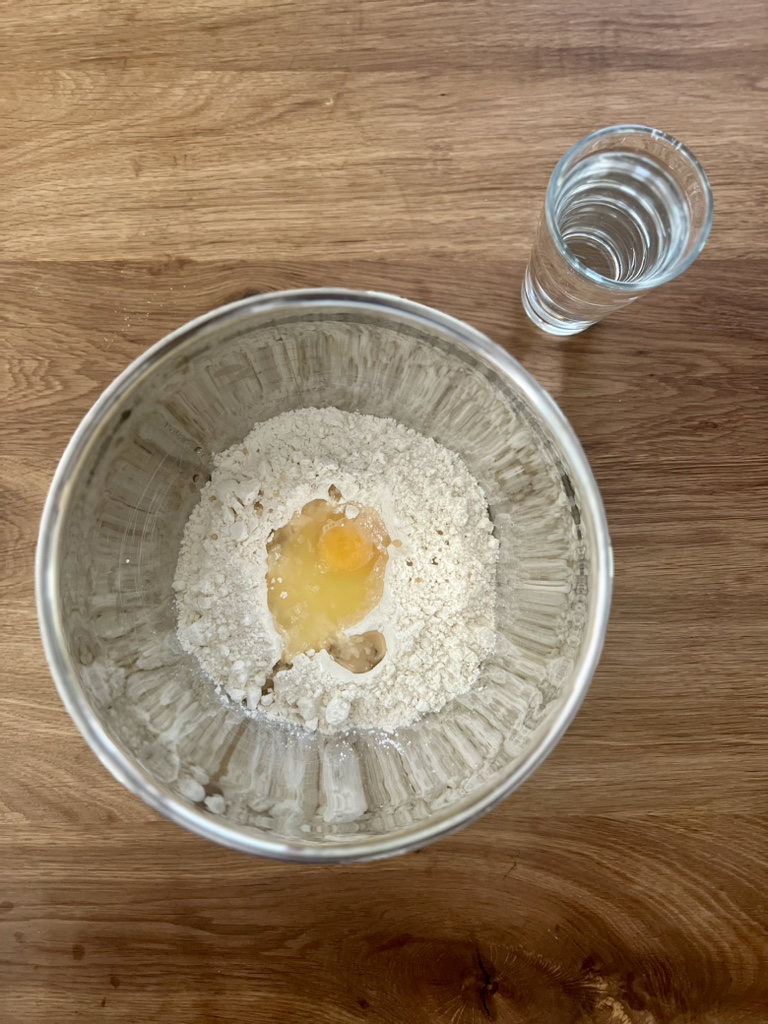
Flour, a little neutral vegetable oil and egg, some salt and water are mixed together and kneaded for about 10 minutes until a firm, smooth ball can be formed. This is wrapped in foil and then left to rest for at least 30 minutes, preferably an hour.
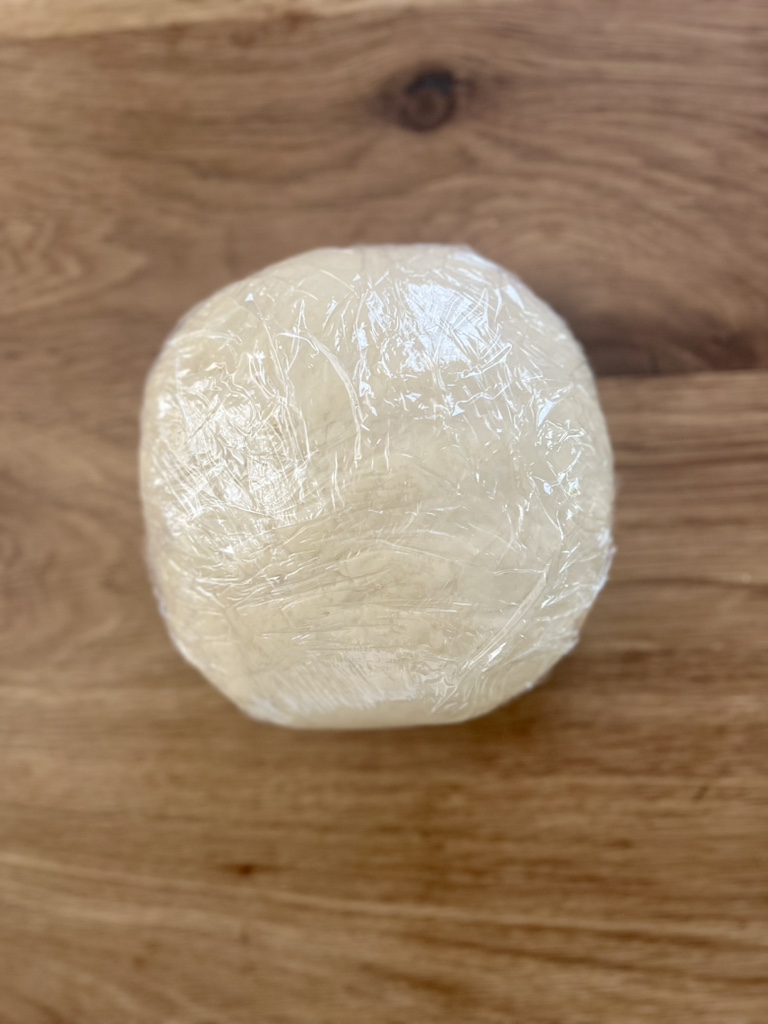
The Filling:
For the filling, finely dice onion and leek. Since both will be browned in a pan afterwards and the filling needs to bind, the pieces should not be too large; 3 mm is the maximum.

For flavour, we sauté onion and leek in clarified butter; alternatively, neutral vegetable oil may be used. Right at the beginning, we add a little salt so that the vegetables lose moisture and begin to brown more quickly. They may well caramelise to a rather dark colour, which provides a very important flavour component. This takes a good 15 minutes on medium-high heat, during which time you should stir occasionally.
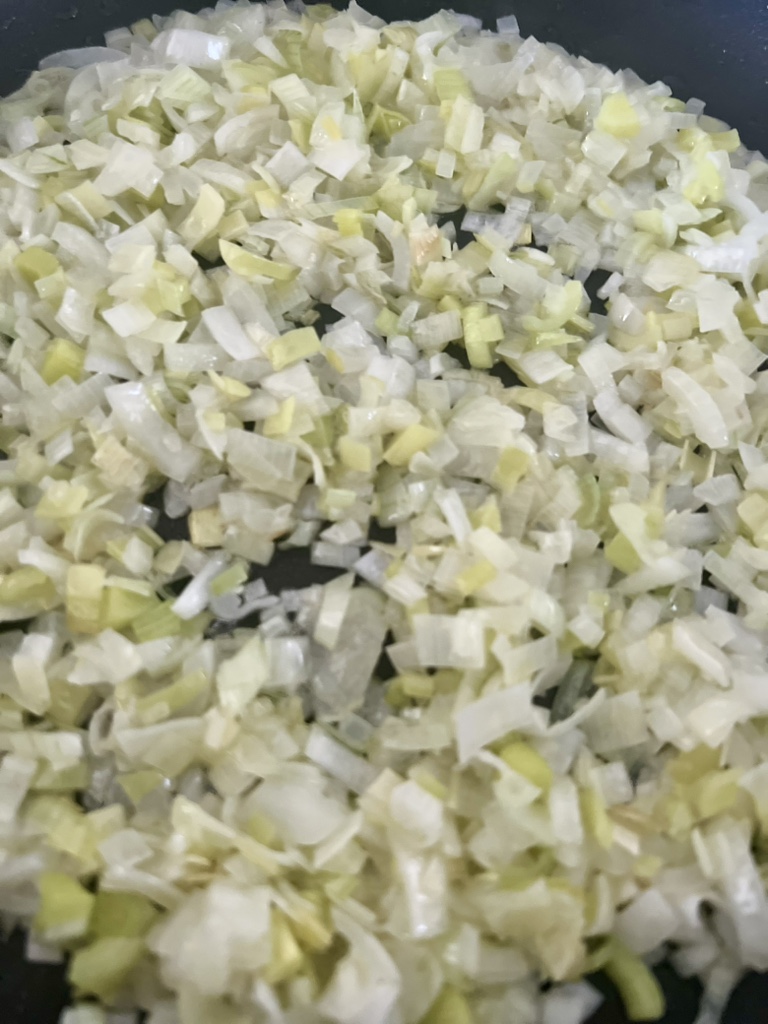
Mealy potatoes are boiled until very soft, peeled and mashed with a fork…
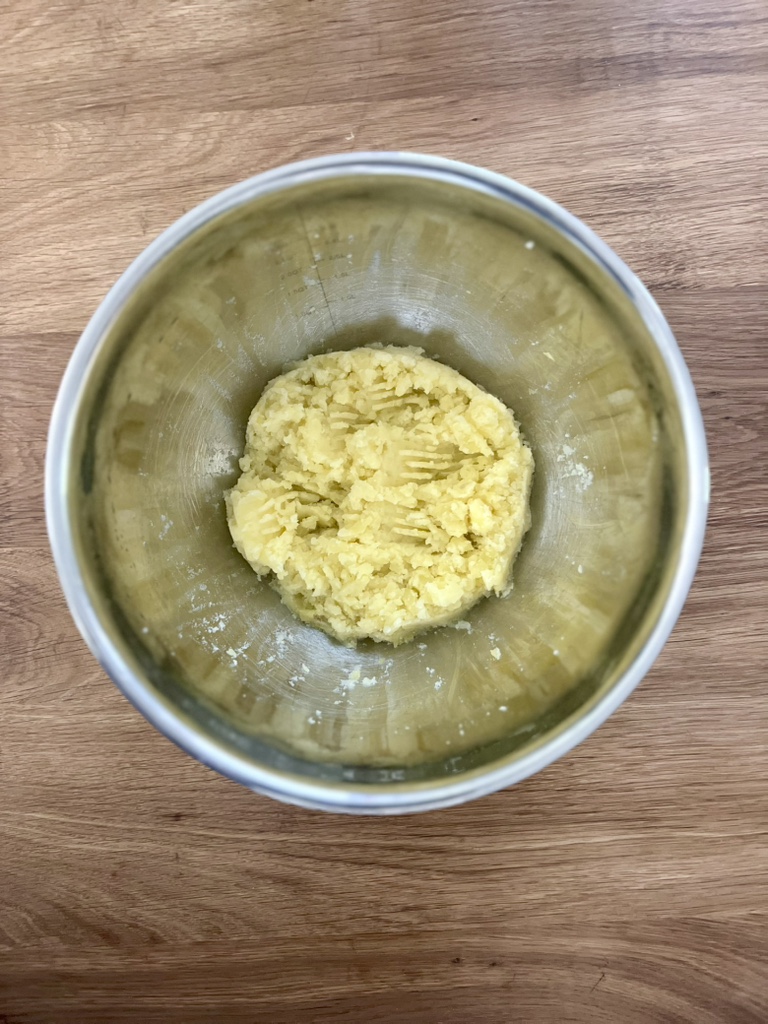
… added to this are the quark and the browned vegetables.
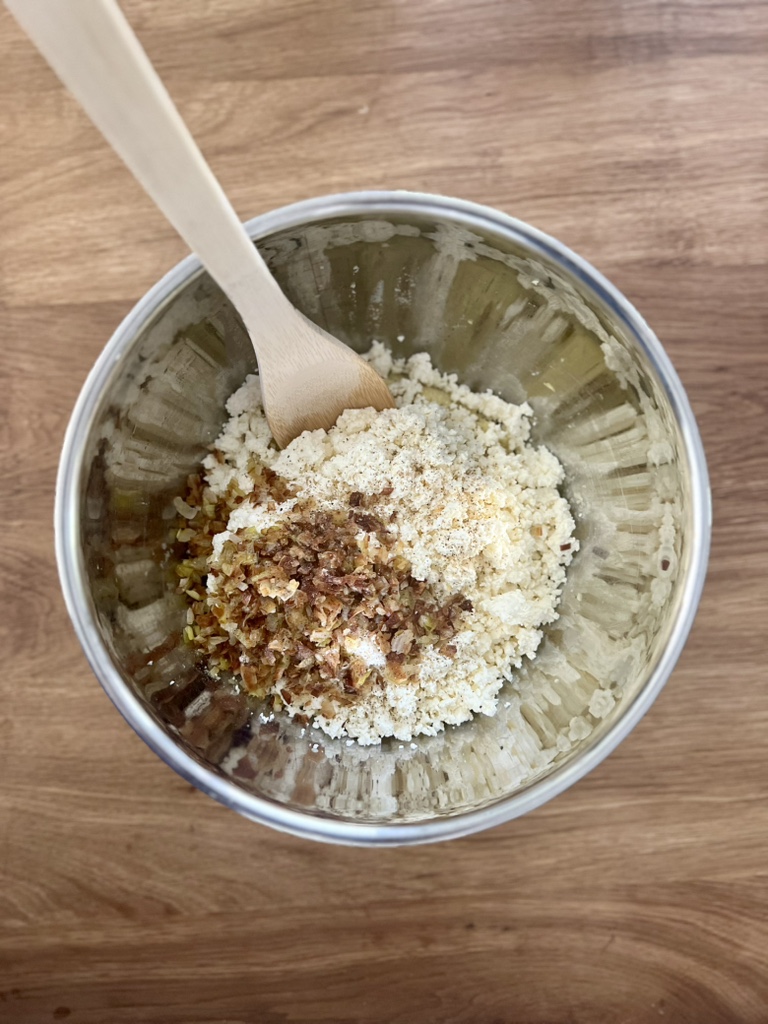
Salt and herbs are the final ingredients; that’s all you need.
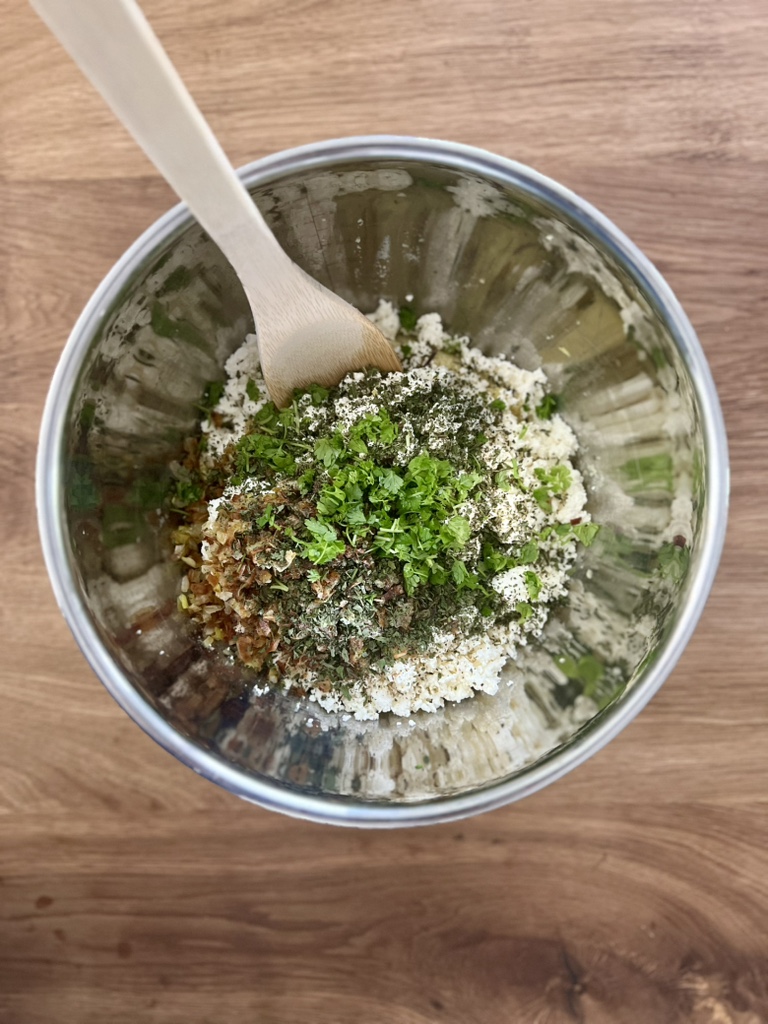
Everything is thoroughly mixed together, which is best done by hand instead of any other tool. If you have “Bröseltopfen”, the mixture will be very firm and stable. Otherwise, it will be much softer, but it should not be very moist or even wet – otherwise add some breadcrumbs.
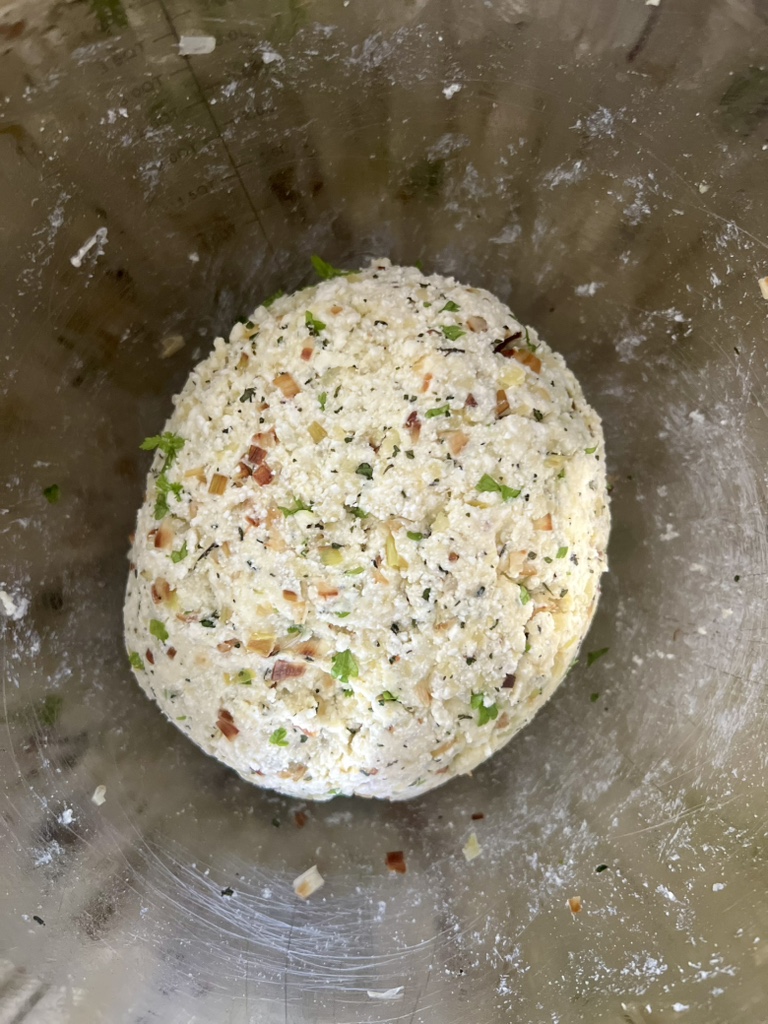
Then form portions of around 40 g into balls. Keep them cool on a baking tray. This recipe makes around 1,000 g of filling, which is enough for 25 pieces and a main meal for 5–6 people. We wouldn’t make any less than that.
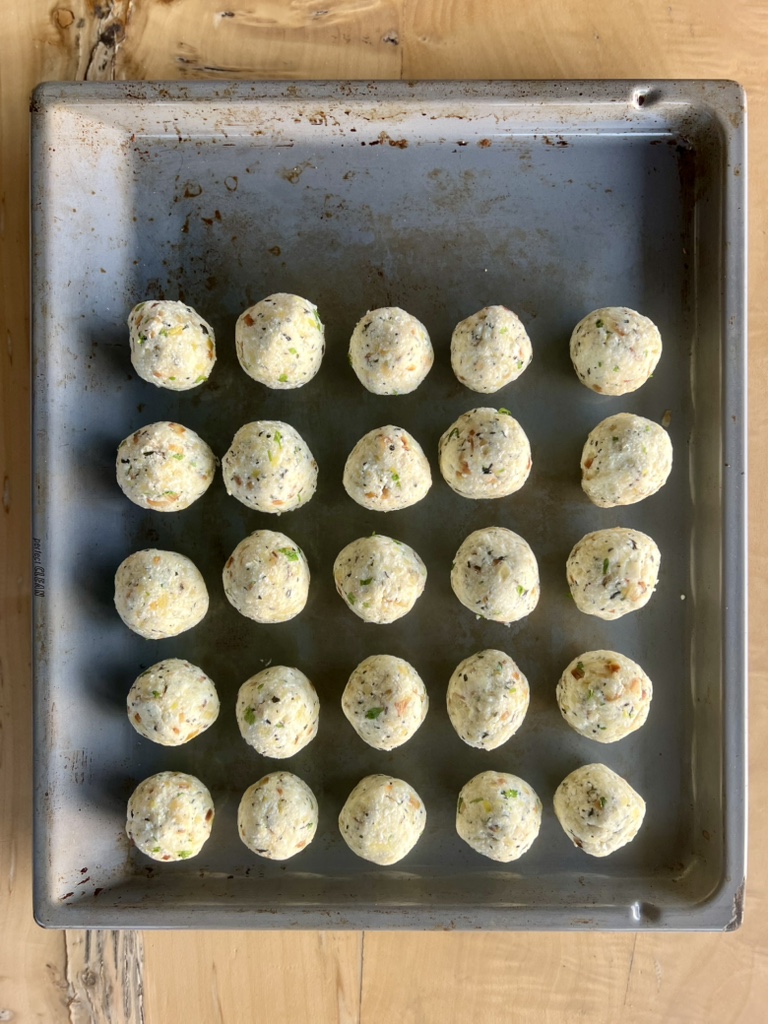
Roll out the dough quite thickly, to a thickness of 2–3 mm. Then cut out circles with a diameter of 7–8 cm; you can do this with a cup or bowl, for example. The resulting dough pieces can be kneaded and reused; leftovers can simply be cut into strips and cooked as humble noodles.
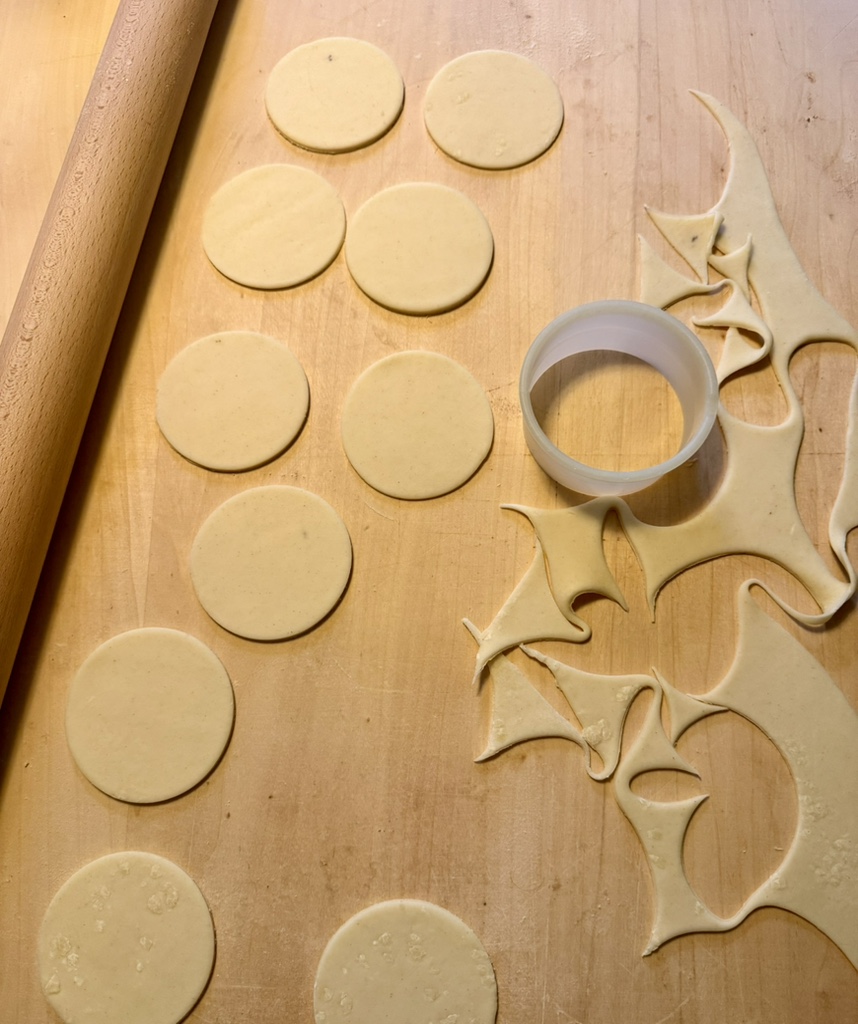
What comes next looks more difficult than it is. Take a circle of dough and stretch it slightly in all directions so that it becomes completely elastic. Then place a ball of filling in the middle and fold the dough over it to form a half-moon shape. Press the dough firmly together on the round outer edge without trapping any air inside the dumpling.
Then it’s time to ‘krendel’. Here is a very short and perfectly instructive video on how to do it.
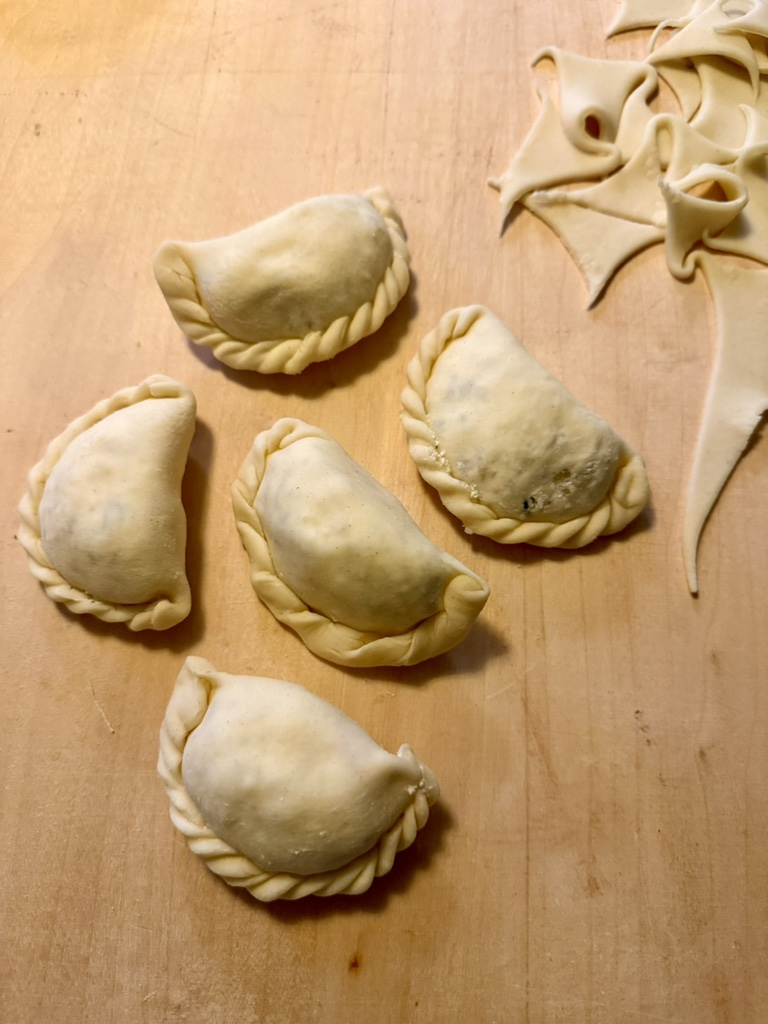
The finished pasta is stored again on a lightly floured baking tray so that it retains its shape. However, you should not wait too long before either freezing it or cooking it in salted water for 10 minutes. To do this, place the pasta in boiling water and then lower the temperature immediately and keep it just below boiling point. For us, level 6 out of 10 on the hob is just right for this.
Serve simply with brown butter and finely chopped chives. A crisp salad goes very well with this dish.
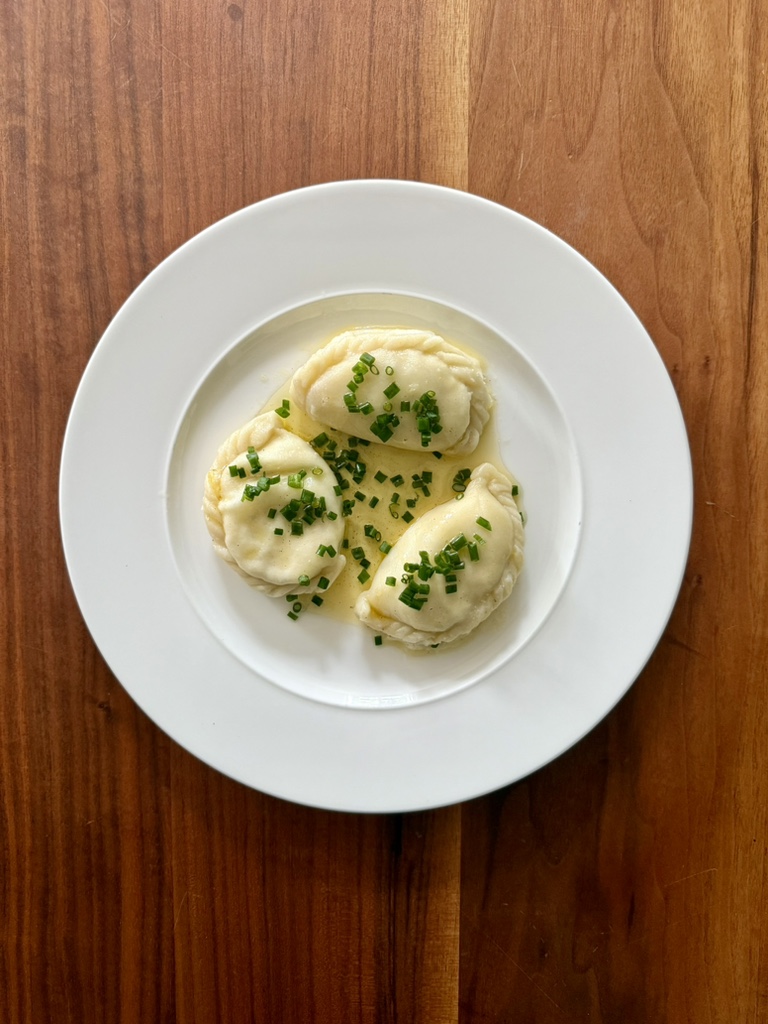
Enjoy.
And may the taste be with you.
Ingredients (for 5–6 people / 24–25 pieces):
For the dough:
500 g fine wheat flour for pasta dough (type 405 / W700 / 480 “glatt”)
1 tsp salt
2 tbsp neutral vegetable oil
1 egg (medium size)
200 ml warm water (if the dough is too dry, moisten your hands and continue kneading until it has the desired consistency)
For the filling:
500 g low-fat quark (“Bröseltopfen”) – alternatively 350 g ricotta or drained quark
300 g mealy potatoes – 450 g if using ricotta or other quark
1 tbsp clarified butter (alternatively neutral vegetable oil)
100 g leek
100 g onion
2 tsp salt
4 tbsp pasta mint (brown mint) – usually not available, so use a little dried Turkish mint, fresh Moroccan mint, more chervil, or parsley
4 tbsp chervil
To serve:
Chives
